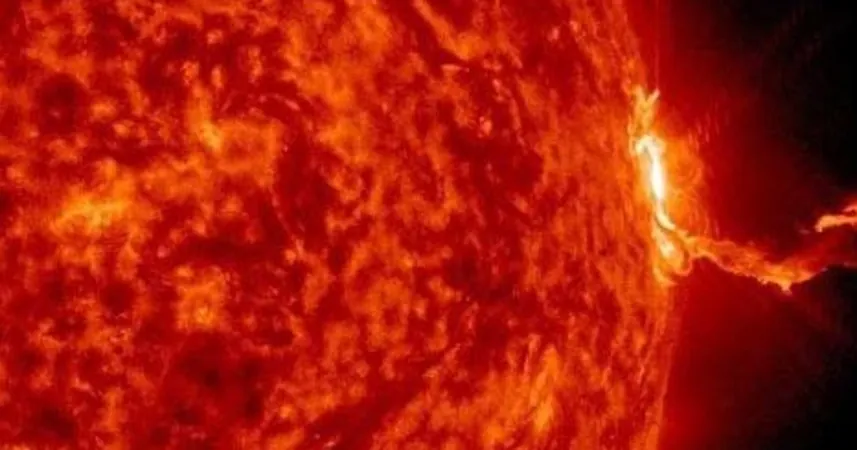
Unleashed Fury: Massive Solar Storm Disrupts Global Communications
2025-05-14
Author: John Tan
In an astonishing display of cosmic power, the sun erupted with two colossal flares on Wednesday, immediately following a breathtaking capture of a separate flare by a NASA observatory.
These back-to-back solar explosions, which marked the strongest activity of the year thus far, have been linked to widespread shortwave radio blackouts across at least five continents. Experts suggest these eruptions may indicate a significant uptick in solar activity as we progress into the year.
The most intense solar storm reached its peak at approximately 4:25 a.m. ET, unleashing a massive X-class flare that spewed streams of plasma and charged particles into space.
The National Oceanic and Atmospheric Administration’s Space Weather Prediction Center noted that flares of this magnitude are rare, emphasizing the extraordinary nature of this event.
Solar flares are categorized into five classes: A, B, C, M, and X, with each letter representing a tenfold increase in energy release over the previous category. Recently, an X2.7 flare and an M5.3 flare were recorded, showcasing immense solar activity.
Just a day prior, a separate X1.2 flare had erupted, with NASA’s Solar Dynamics Observatory capturing a stunning image of the vivid tendril of fire bursting forth from the sun.
The implications of powerful solar storms can be dire, particularly for astronauts in space, as they pose risks to GPS systems, satellites, and can even disrupt radio communications. Instances of shortwave radio blackouts have been reported across regions of North America, South America, Southeast Asia, Africa, and the Middle East.
Shawn Dahl, a forecaster with NOAA, explained that the X2.7 flare coincided with the sun's position over the Middle East, which led to disruptions in high-frequency radio signals lasting about ten minutes during the storm's peak.
While such solar activity can result in communication issues, it also paints a brighter picture with the potential for spectacular auroras. As charged particles collide with Earth’s magnetic field, they can create magnificent light shows at latitudes that usually don't experience such displays.
Scientists have determined that we are currently in an active phase of the sun's 11-year cycle, with an ongoing solar maximum expected to bring more solar storms in the coming months.
Dahl noted that although Wednesday’s flare marked a significant event this year, it still falls short of the peak activity recorded in this cycle, which was dominated by an astonishing X9.0 flare that erupted on October 3, 2024. The sun's turmoil may have only just begun!



 Brasil (PT)
Brasil (PT)
 Canada (EN)
Canada (EN)
 Chile (ES)
Chile (ES)
 Česko (CS)
Česko (CS)
 대한민국 (KO)
대한민국 (KO)
 España (ES)
España (ES)
 France (FR)
France (FR)
 Hong Kong (EN)
Hong Kong (EN)
 Italia (IT)
Italia (IT)
 日本 (JA)
日本 (JA)
 Magyarország (HU)
Magyarország (HU)
 Norge (NO)
Norge (NO)
 Polska (PL)
Polska (PL)
 Schweiz (DE)
Schweiz (DE)
 Singapore (EN)
Singapore (EN)
 Sverige (SV)
Sverige (SV)
 Suomi (FI)
Suomi (FI)
 Türkiye (TR)
Türkiye (TR)
 الإمارات العربية المتحدة (AR)
الإمارات العربية المتحدة (AR)